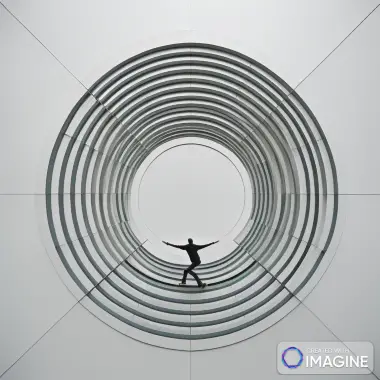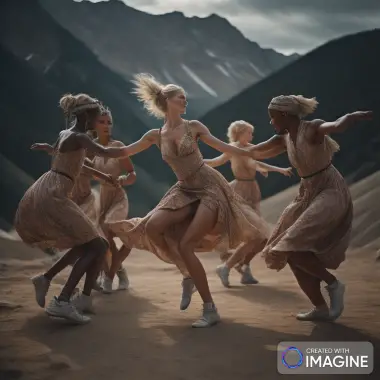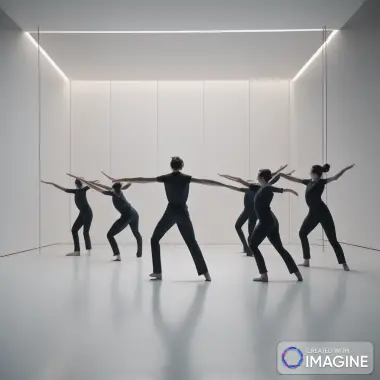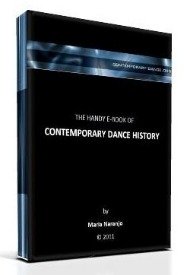Good music for contemporary dance
Below you’ll find options to find and/or choose good music for contemporary dance. But please… be patient and read my explanations. Contemporary dance differs from the rest of dance forms in the fact that there’s not one unique type of music that is specific for it. Therefore, one must understand the logic with which the music or soundscape of a contemporary dance choreography is chosen or created. So, before finding concrete options, please read…
Contemporary dance is a realm where emotions, storytelling, abstract movement, and any kind of expressions transpire through diverse blends of movement and music. The spectrum goes from pieces that are danced in the silence, to others that have non-rhythmical soundscapes, pop songs, classic symphonies, or electronic beats (its best to say: any music may do it!).
But why is music important in contemporary dance? Music is not merely a rhythmical an emotional support in contemporary dance. It serves as a complementary language that is used creatively. Therefore, building the perfect sonic setting is inherently free, inherently expressive, sometimes done intuitively, sometimes even intellectually. Yet, choreographers usually aim to produce a vibrant space where the music not merely complements, but intertwines with the choreography, creating a deep scenic experience that moves the audience.
To select the best music for contemporary dance, choreographers consider different features like the narrative, pace, tone, intention, and mood of their performance. What genre of music is then used for contemporary dance? This can span eclectic genres, from classical to techno, jazz to indie-pop, world music to ambient sounds. The beauty is precisely in this vast scope, where any style can be repurposed for dance, channeling diverse emotions, or intentions (if you want to have ideas about intentions and purpose in our field, read this article that explains contemporary dance trends of the last decade 2013-2023).
So, how to choose music for contemporary dance?
1. Finding prerecorded tracks that fit your idea.
2. Collaborating with a musician that composes and records a tailored track for your piece.
3. Collaborating with musicians that play live during the performance.
4. Dancing in the silence
5. Other ideas…?

Options to find good music for contemporary dance
1. Finding prerecorded tracks that fit your idea for a contemporary dance solo or choreography.
This is a relatively easy option but has its downsides. First, you will have to adapt your choreography to the length and features of the musical piece. Some artists edit the tracks, but it must be said that editing prerecorded tracks does not always end up in very good results (from the musical point of view). So, if you are not very music savvy, you’ll need help for this task.
Another downside is that you must consider copyrights if you’re preforming in public or for commercial purposes.
And finally, this method may imply a gooooood amount of time listening and searching for your music, with results that may not satisfy you completely.
If you decide to go this way and are looking for royalty-free music that can inspire your contemporary dance piece, several websites and platforms offer a wide array of choices. These include Free Music Archive, Jamendo, ccMixter, SoundCloud, and incompetech. Here, you can search, listen, and download music for free without the worry of copyright claims.
2. Collaborating with a musician that composes and records a tailored track for your choreographic piece.
This is a great option, especially if you want to be free to compose the structure of your dance and if you don’t want prerecorded music to influence your piece or creative process. It will demand different tasks and skills from you as a choreographer, but mainly, you’ll need to transmit your ideas and the needs of the piece to the musician. I wrote a guide to help you with this in the following page:
How to order a musician to create the music for your choreographic project
Please take
your time to read that explanation. There, you’ll also find a list of music
composers offering their services to create music for dance:
Mike Wall from SoundforMovement
Oliver from Contemporary Dance Music
If you know of others, don’t hesitate to contact me to share their names or contact details. I’ll add them to the list above.
3. Collaborating with musicians that play live during the performance.
Don’t forget this third option, which is great also. It is the most complicated path, regarding logistics, but it’s the one that creates the nicest, organic quality of sound. Live music has a different quality, no doubt, and that is something that is felt by dancers and by the audience. But that’s something you need to experiment yourself. So, if you have the privilege to dance with live music, enjoooooy! You’ll have more logistics and costs to cover, but it is worth the experience. And regarding the creative process, you’ll need the same skills as with the second option above, plus being able to direct rehearsals with both dancers and musicians (that’s a whole other topic!).

Apart from the options mentioned above, it is also good to do some research and study of the music used historically in contemporary or post-modern dance. I’ll list some renowned musicians below to serve as examples only, because defining if music is good or bad for a dance piece is a subjective matter. Also, the number of figures and pieces in contemporary dance history is now so big, that the following names are just the ones of some famous people, and only aim to serve as a reference to reflect on.
Among the contemporary composers known for their substantial contribution to dance is Philip Glass, an innovative artist whose distinct, minimalistic style holds captive the audience's attention. His music can provide an underlying rhythm for powerful choreographies, fostering an intriguing fusion between dance and music.
Then, there’s Max Richter, a superb composer known for his cinematic soundscape that blends classical and electronic music. His oeuvre such as "Sleep" or "Recomposed: Vivaldi - The Four Seasons" has been widely used in contemporary dance.
Olafur Arnalds, an Icelandic multi-instrumentalist, ingeniously intertwines strings and piano with loops and edgy beats, creating mystery and emotion that can serve contemporary dance powerfully.
Steve Reich, considered one of the founding fathers of minimalism, has provided consistently engaging and complex music that has been used to choreograph a multitude of contemporary performances.
Finally, Zoe Keating, a professional cellist and composer, enhances choreographies with her unique blend of traditional and electronic sounds. Her distinct style holds immense potential for transformable contemporary dance music.
Turning the lens towards renowned contemporary choreographers can provide unmatched insights and inspire creativity. Akram Khan's use of Nitin Sawhney's "Breathe" is a laudable example of how the fusion of contemporary dance and world music can create something profound and impactful.
The striking choreography of Pina Bausch for "Café Müller" used the iconic music by Henry Purcell, displaying a beautiful blend between moving performances and arresting baroque music.
Crystal Pite's piece "Emergence," was brought to life by a score from Owen Belton, providing the perfect backdrop for Pite’s signature blend of ballet and contemporary technique.
Merce Cunningham's collaborations with composers like John Cage resulted in experiments that often saw the dance and music created separately yet coming together to create a combined dramaturgical sense on the stage.
William Forsythe's groundbreaking work often used specially commissioned scores, notably from Thom Willems, creating a synergistic relationship between the choreography and the music.
In conclusion, if you ask me, what music goes with contemporary dance? I’ll have to say that selecting good music for contemporary dance is a dynamic process. There's no single type of music that's predefined. It’s an artistic decision based on the choreographer's vision, the intent of the performance, and the potential fusion between dance and music. The journey to finding the right music can be as creative and riveting as the choreographic project itself, leaving the door wide open to curious exploration, playful discovery, and, ultimately, breathtaking performances… like yours!

Related reading: Contemporary Dance Music
Return from Good Contemporary Dance Music to Dance Composition
Return from Contemporary Dance Music to Contemporary Dance Home Page
The handy e-book of CONTEMPORARY DANCE HISTORY:
The Dance Thinker is our occasional E-zine. Fill in the form below to receive it for free and join us.
Read:
"The Dance Thinker"
BACK ISSUES
Post contemporary dance announcements (workshops, auditions, performances, meetings and important news... it is free.)



